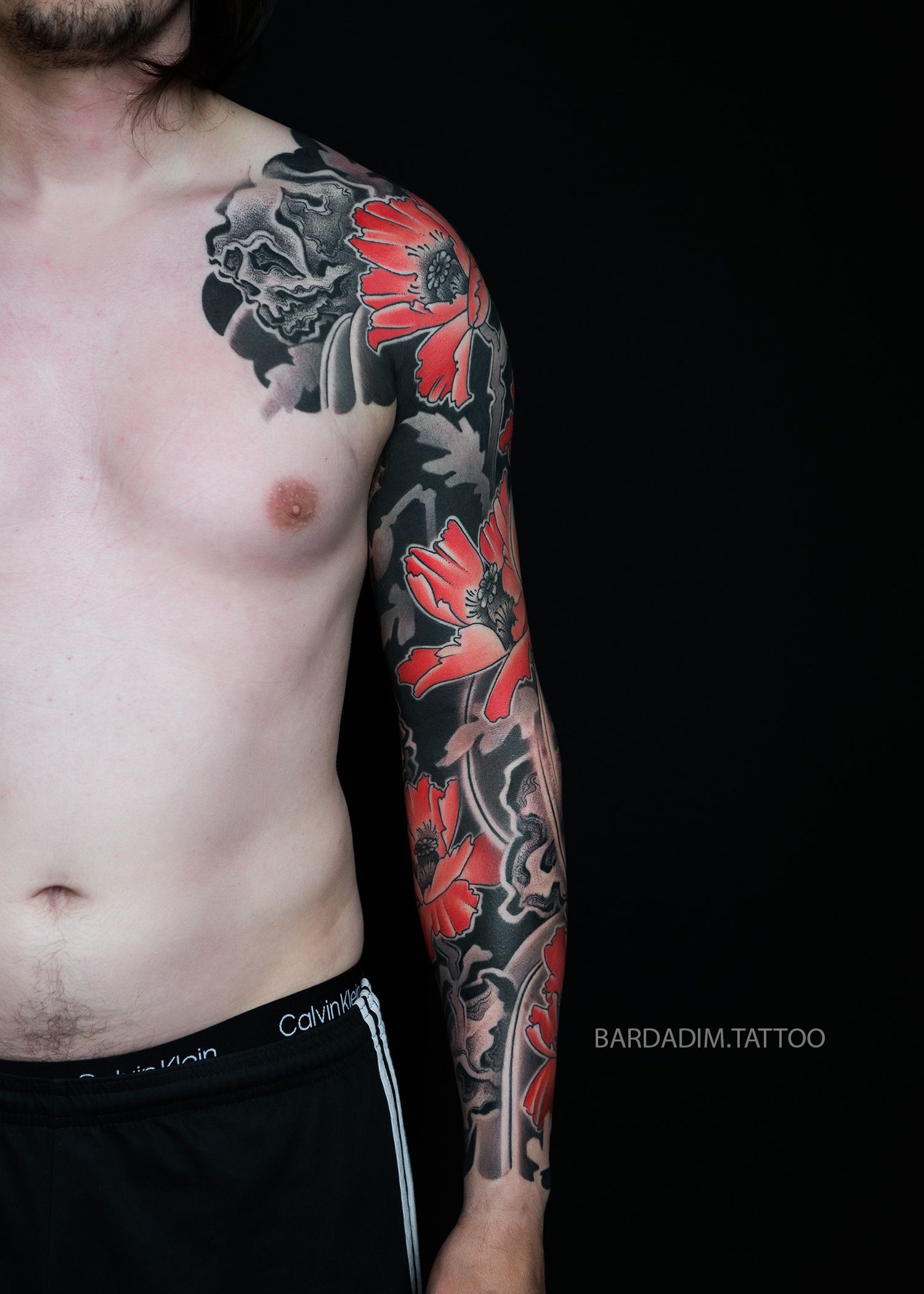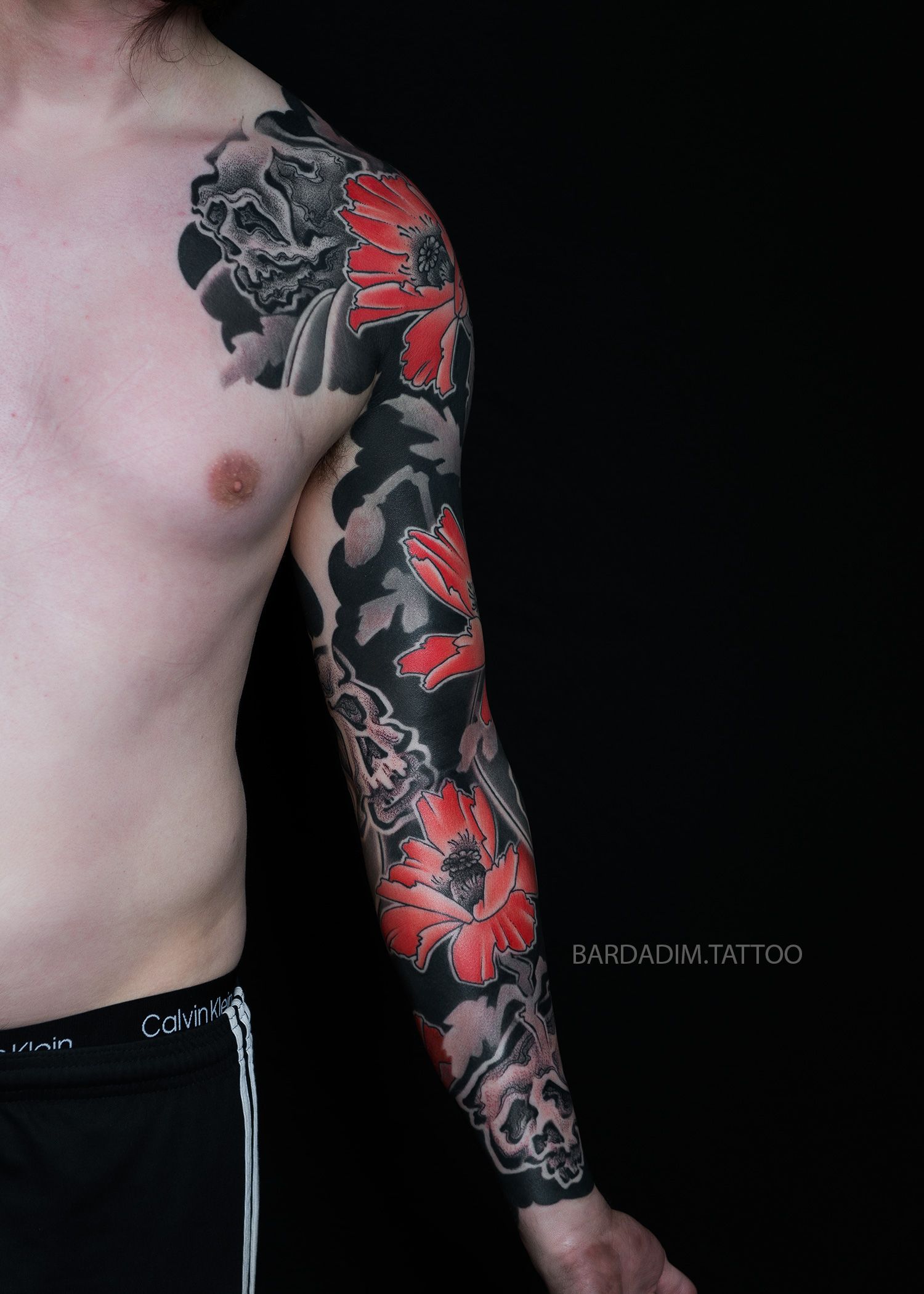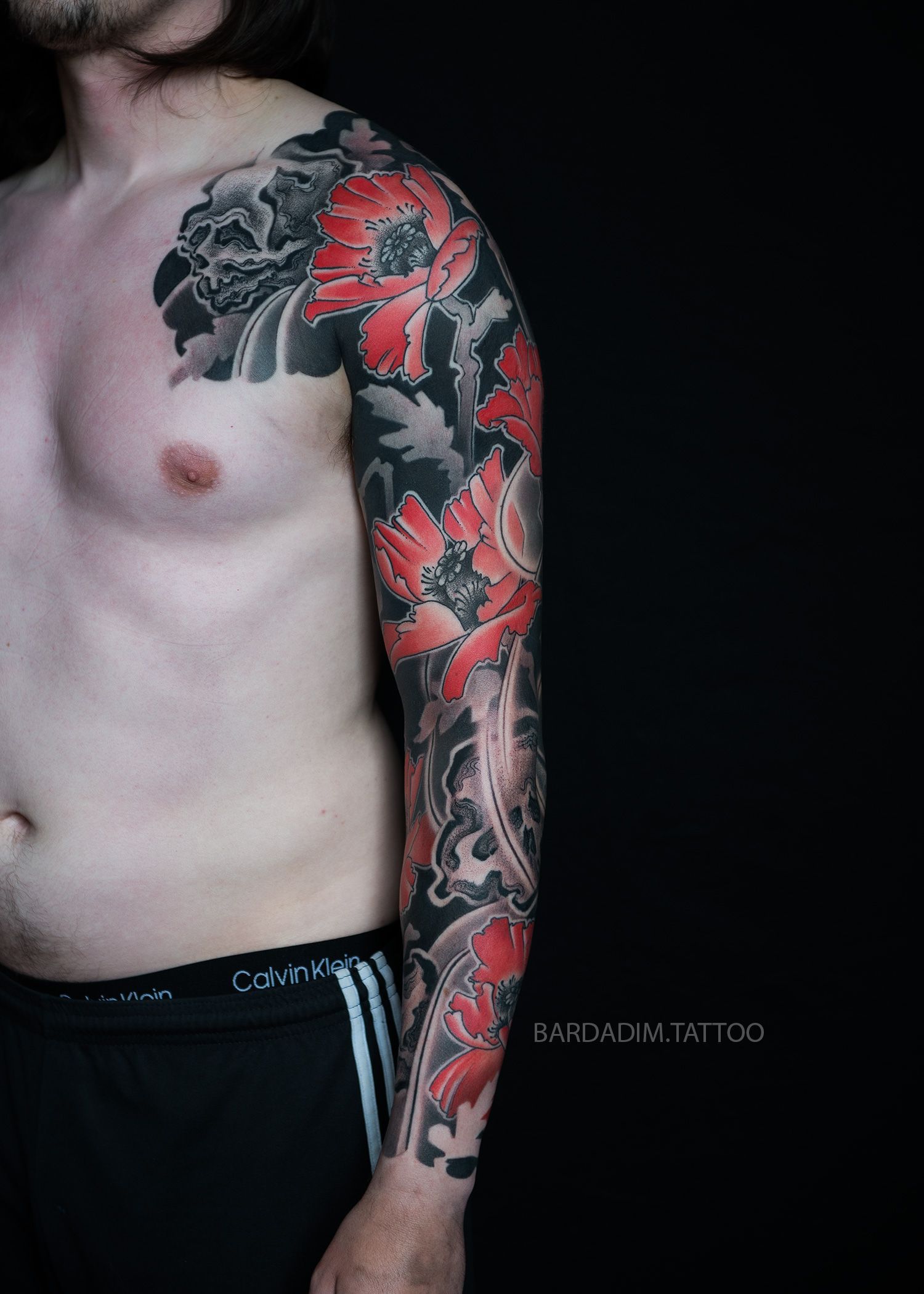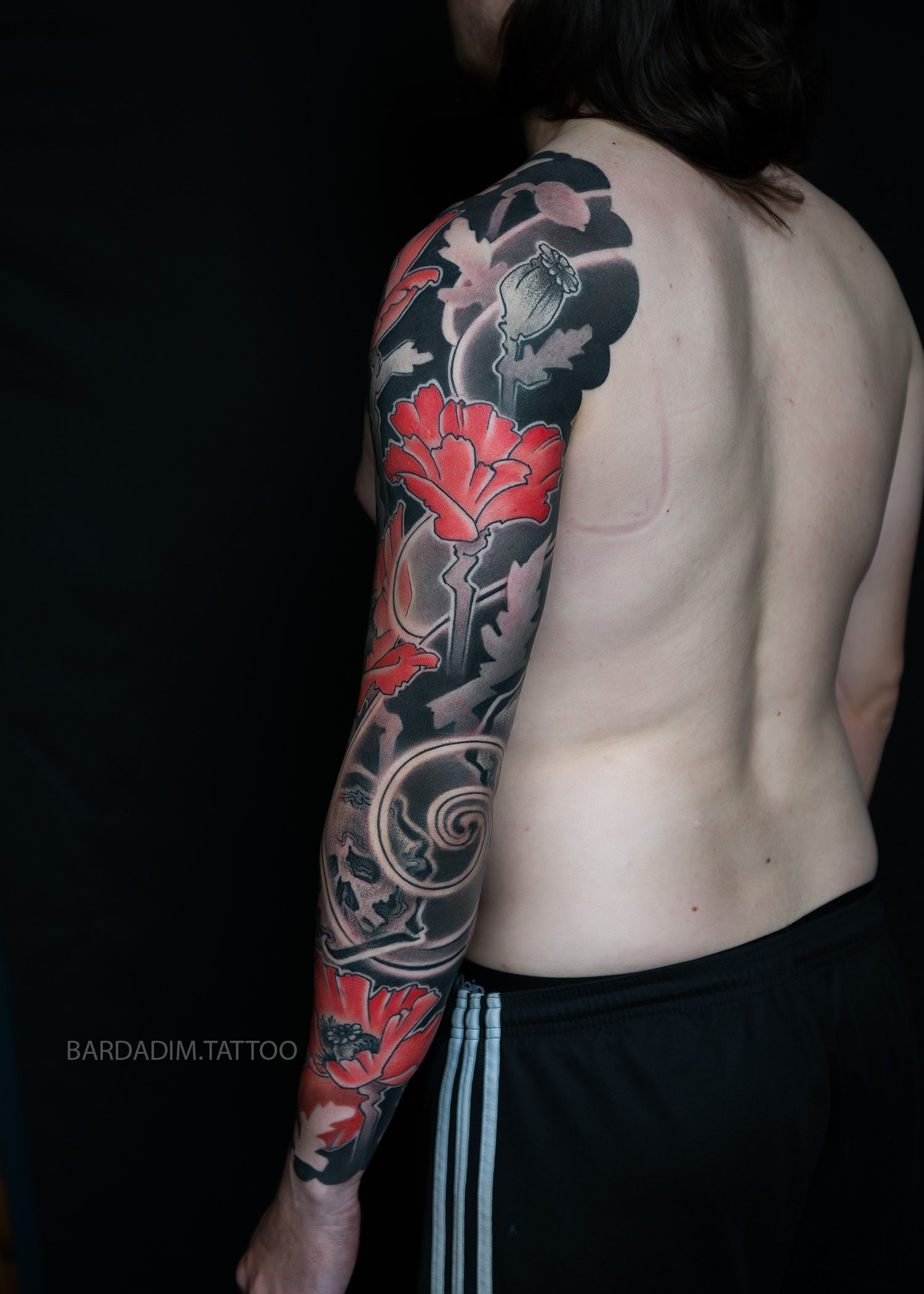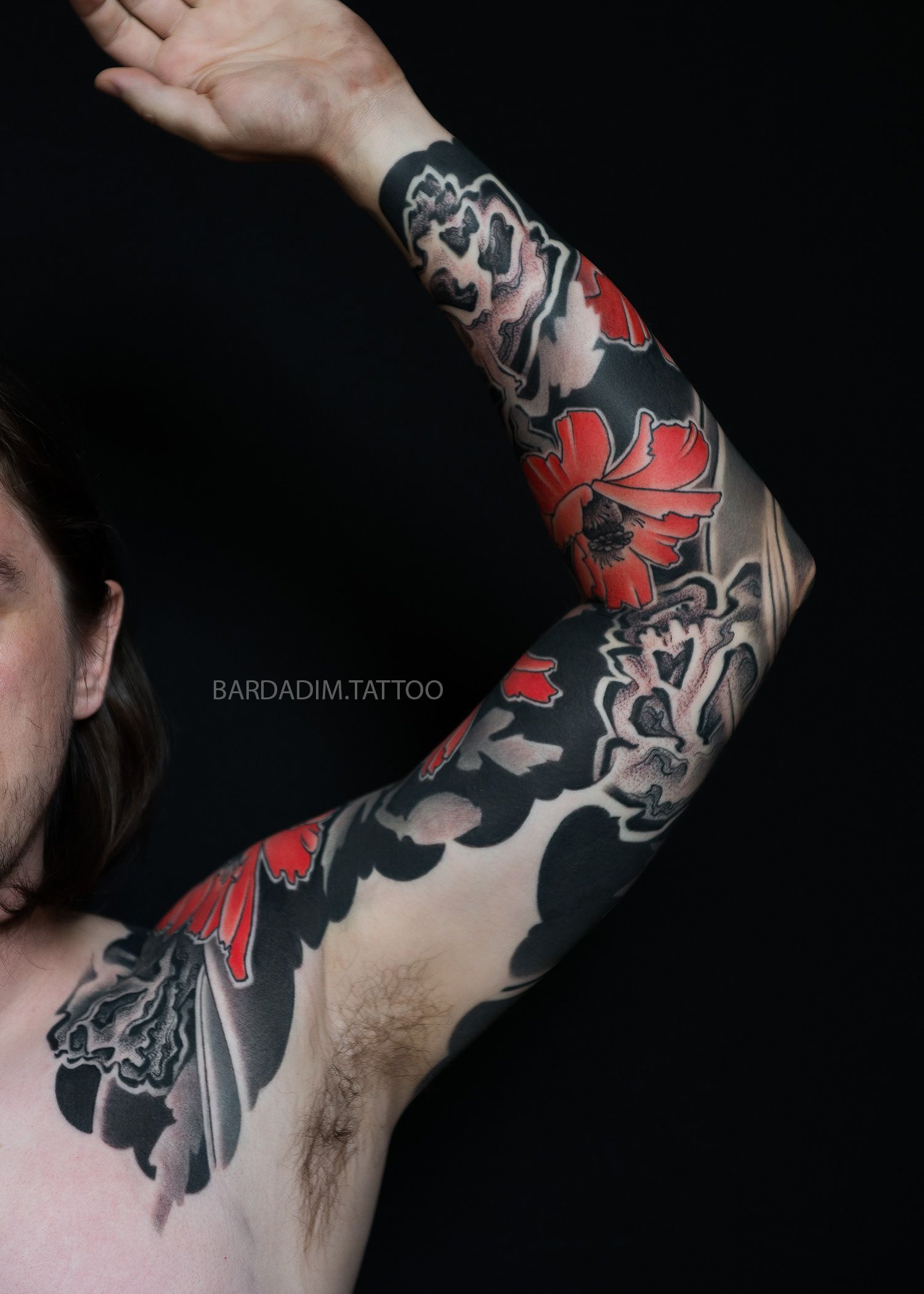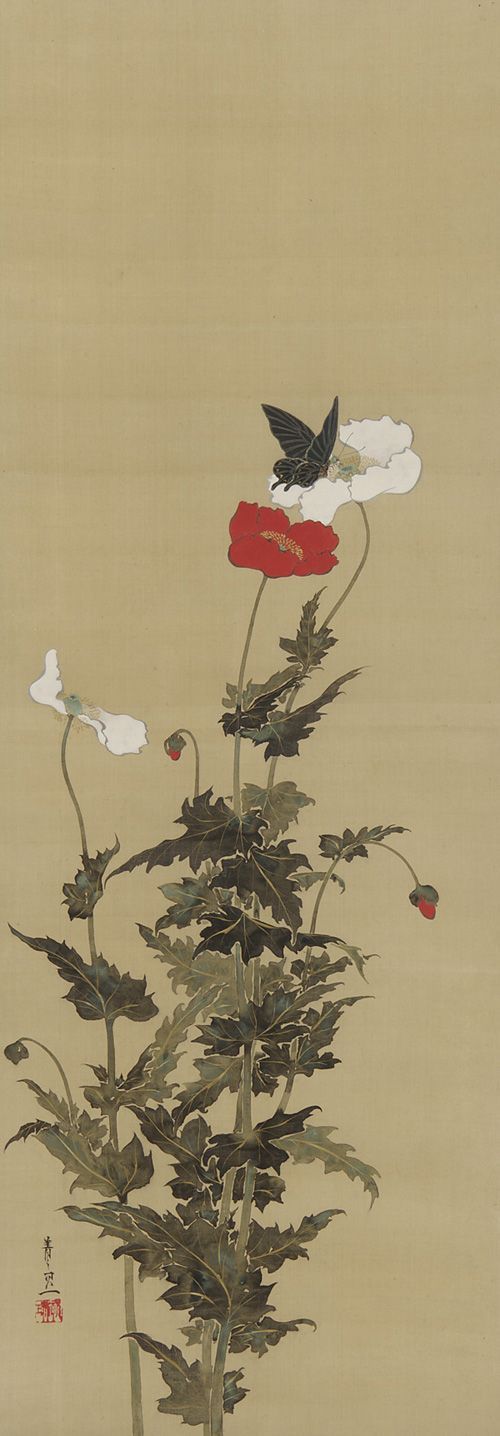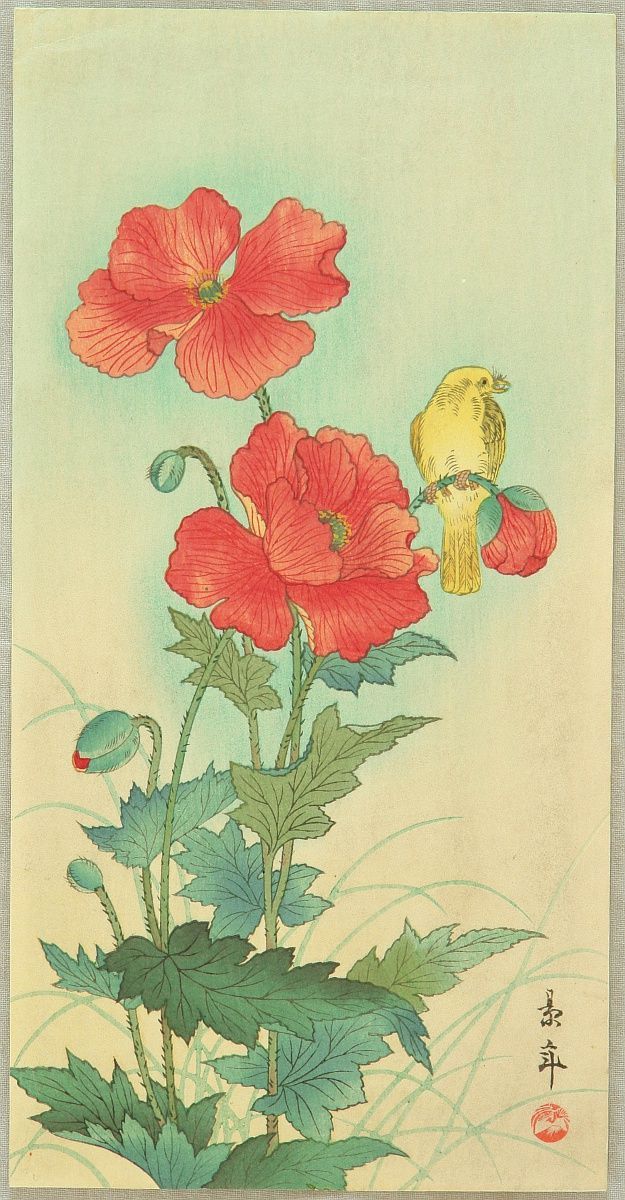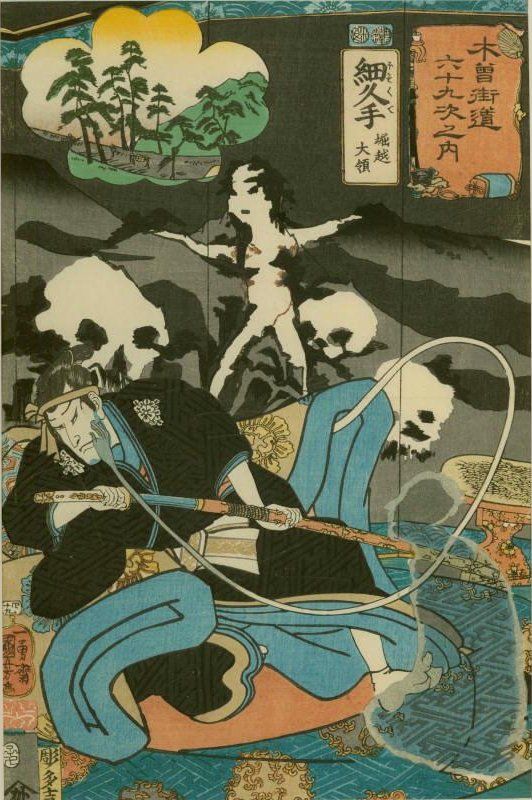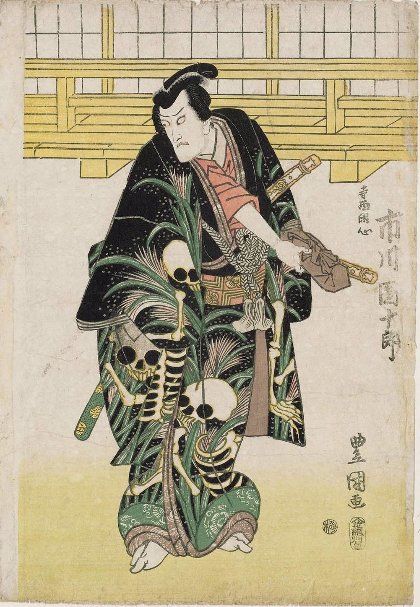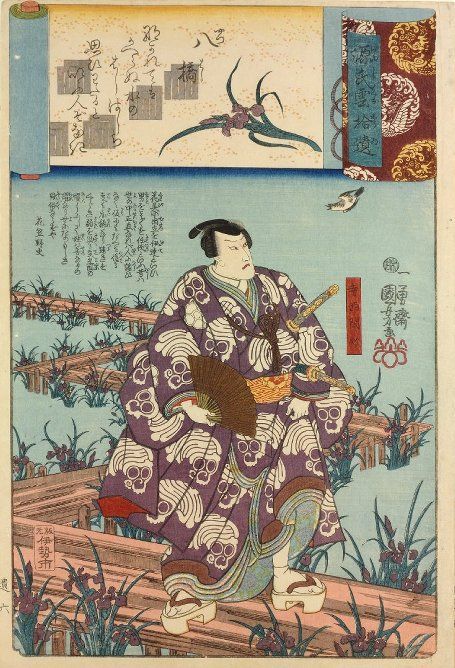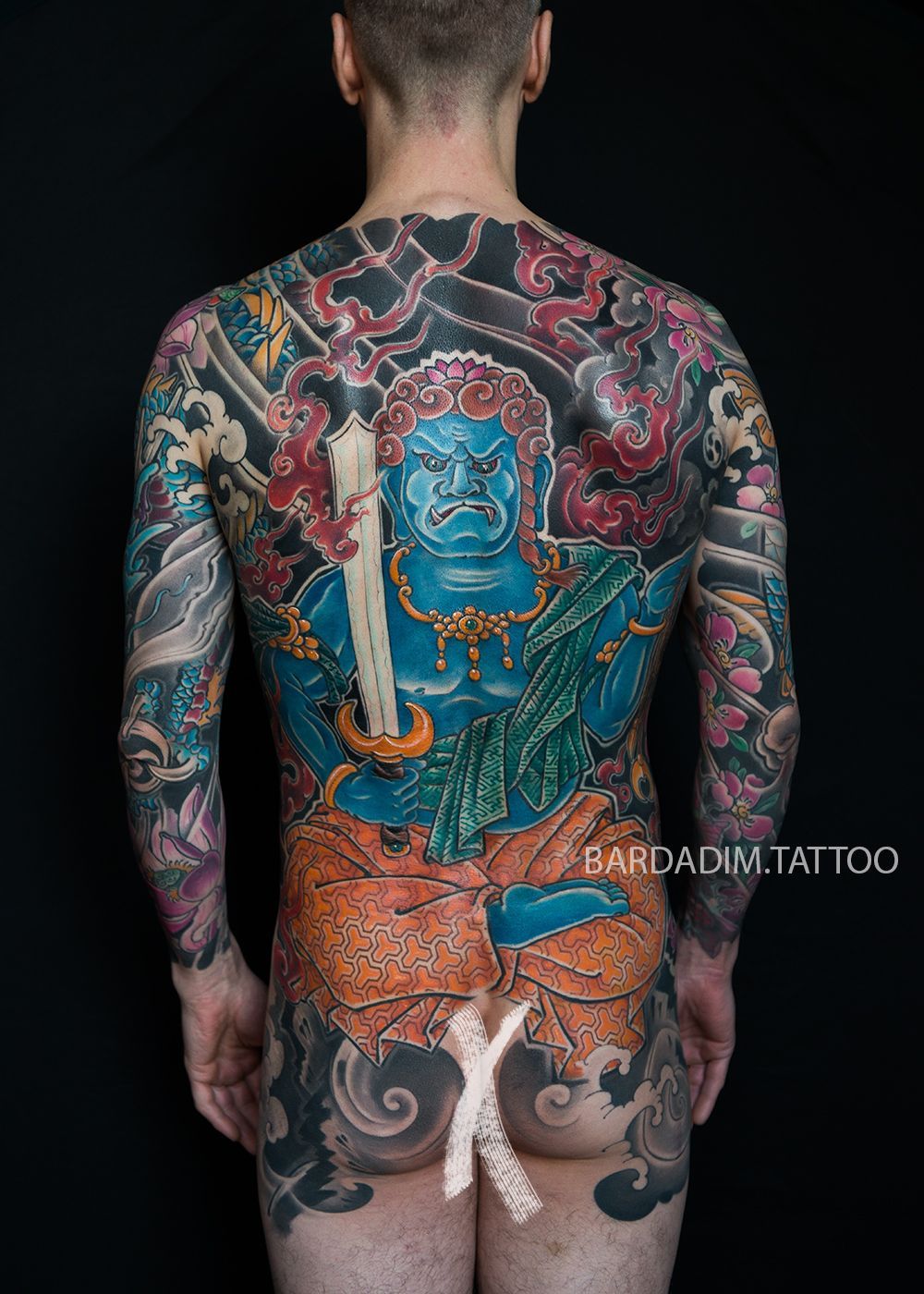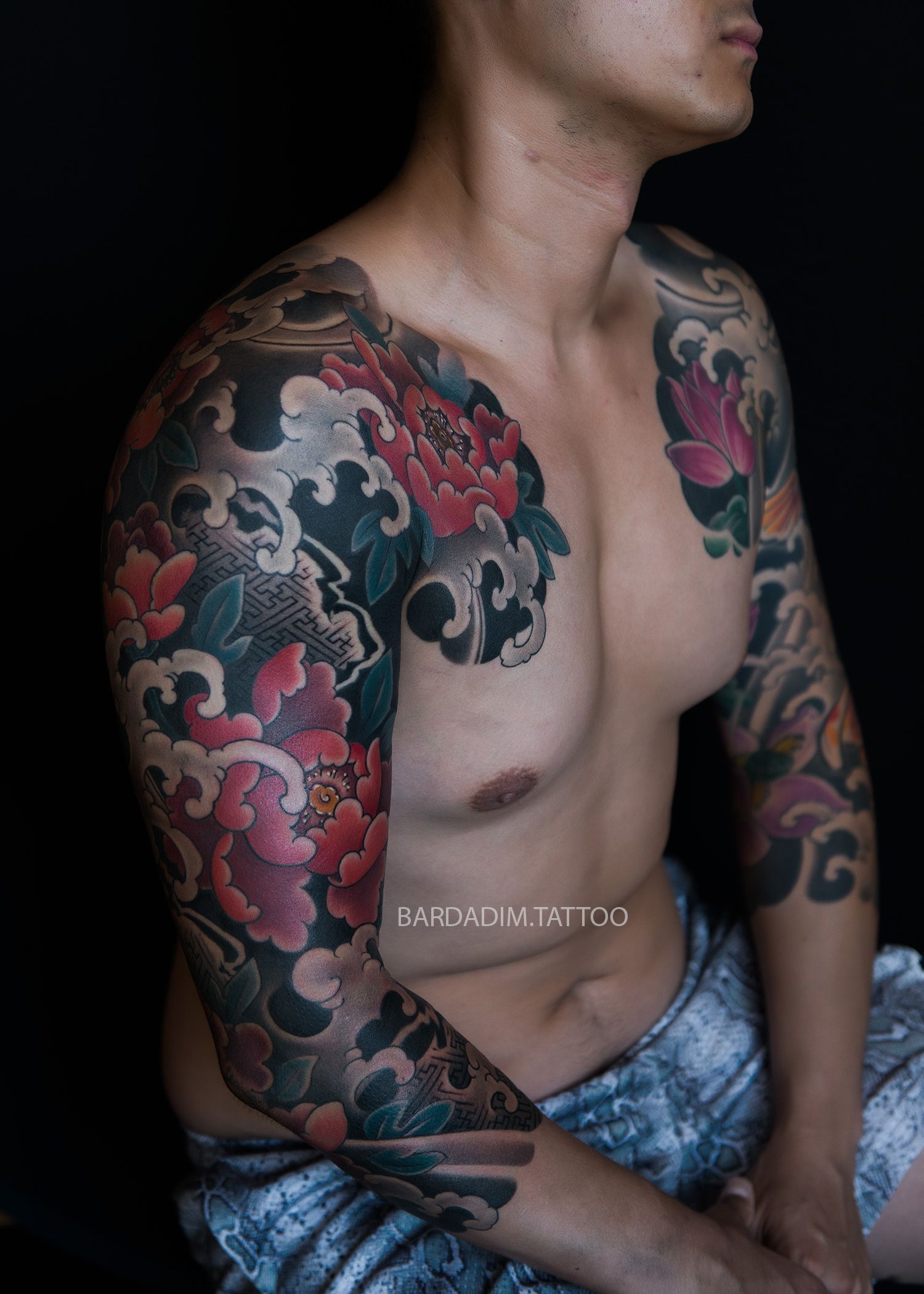Poppy Flowers and Skull-Looking Rocks
Japanese tattoo art, renowned for its intricate designs and profound symbolism, holds a special place in the world of body art. Among the myriad themes, a popular and deeply symbolic motif is the combination of poppy flowers and skull-looking rocks. This combination not only creates a visually striking contrast but also imbues the tattoo with layers of meaning that resonate with traditional Japanese aesthetics and beliefs.
Historical Context of Japanese Tattoo Art
Tattooing in Japan, known as Irezumi, has a history that dates back thousands of years. Initially, tattoos were used as a form of punishment, but over time, they evolved into a respected art form, especially among the Edo period's working-class heroes, like firemen and gamblers. These tattoos often featured mythological creatures, deities, and elements from nature, each chosen for their symbolic value.
The Symbolism of Poppy Flowers
Poppy flowers, known for their delicate beauty and vibrant colors, are laden with symbolism. In Japanese culture, the poppy is often associated with sleep, peace, and death due to the plant's opium-producing properties.
Beauty and Fragility: The ephemeral nature of the poppy flower represents the fleeting nature of life, a concept deeply rooted in Japanese aesthetics.
Peace and Tranquility: Poppies are symbols of calm and serenity, often linked to peaceful rest and the afterlife.
Rebirth and Renewal: In the context of tattoos, poppies can also signify a new beginning or a transformation, echoing themes of rebirth and renewal.
The Symbolism of Skull-Looking Rocks
Skulls and rocks, especially those that resemble skulls, carry significant meaning in Japanese tattoo art. The imagery of skulls can be macabre, yet it is deeply symbolic.
Mortality and the Cycle of Life: Skulls serve as a powerful reminder of mortality, the impermanence of life, and the inevitable cycle of birth, death, and rebirth.
Strength and Endurance: Rocks symbolize strength, resilience, and the ability to withstand the test of time. When rocks are shaped or naturally resemble skulls, they merge the concepts of mortality and endurance, suggesting a respect for life's fleeting nature while celebrating the strength to endure life's challenges.
Protection and Guardianship: In some interpretations, skull-looking rocks can be seen as guardians, warding off evil spirits and protecting the wearer from harm.
The Aesthetic Harmony of Poppy Flowers and Skull-Looking Rocks
The combination of poppy flowers and skull-looking rocks creates a profound visual and symbolic balance. The delicate, vibrant poppies contrast sharply with the stark, often dark imagery of skull-like rocks. This juxtaposition highlights the transient beauty of life against the enduring reality of death and resilience.
Design Elements in Japanese Tattoo Sleeves
When designing a Japanese tattoo sleeve featuring poppy flowers and skull-looking rocks, several key elements are often incorporated to enhance both the visual appeal and the symbolic depth.
Flow and Movement: Traditional Japanese tattoo sleeves are designed to flow with the body's natural contours. The placement of poppy flowers and skull-looking rocks is carefully considered to create a harmonious flow that enhances the body's shape and movement.
Color and Contrast: Poppy flowers are often depicted in vivid reds, oranges, and pinks, creating a striking contrast against the darker, more muted tones of skull-looking rocks. This use of color not only makes the tattoo visually stunning but also emphasizes the symbolic contrast between life and death.
Background Elements: Traditional Japanese tattoos often include background elements such as waves, clouds, or wind bars to add depth and movement to the design. These elements can be used to further integrate the poppy flowers and skull-looking rocks into a cohesive, flowing sleeve.
Detail and Texture: The intricate details and textures in Japanese tattoo art bring the design to life. The delicate petals of the poppy flowers and the rugged, craggy surfaces of the skull-looking rocks are rendered with meticulous attention to detail, creating a rich, textured appearance.
The Cultural Significance of Poppy Flowers and Skull-Looking Rocks in Modern Japanese Tattoos
In contemporary Japanese tattoo art, the themes of poppy flowers and skull-looking rocks continue to resonate deeply. While traditional meanings are preserved, modern interpretations may also incorporate personal significance for the wearer.
Personal Stories and Meanings: Many individuals choose these motifs to represent personal experiences of loss, resilience, and transformation. The poppy may symbolize a loved one lost or a significant life change, while the skull-looking rock may represent the inner strength and endurance developed through those experiences.
Fusion of Tradition and Modernity: Modern tattoo artists often blend traditional Japanese techniques with contemporary styles, creating unique designs that honor cultural heritage while also reflecting the personal narratives of the wearer.
Global Influence: The appeal of Japanese tattoo art has transcended cultural boundaries, with people worldwide drawn to its intricate designs and profound symbolism. The themes of poppy flowers and skull-looking rocks are universally relatable, allowing for a deep connection with the art regardless of cultural background.
Choosing the Right Artist for a Japanese Tattoo Sleeve
Selecting the right tattoo artist is crucial for a successful Japanese tattoo sleeve. Given the complexity and cultural significance of these designs, it is essential to find an artist skilled in traditional Japanese tattoo techniques and knowledgeable about the symbolism involved.
Experience and Portfolio: Look for an artist with a robust portfolio of Japanese tattoo work. Their experience will ensure they can create a design that is both visually stunning and rich in meaning.
Cultural Sensitivity: A good tattoo artist will understand and respect the cultural significance of the motifs they are working with. They should be able to explain the symbolism and help you choose elements that resonate with your personal story.
Technical Skill: The intricate details and textures in Japanese tattoo art require a high level of technical skill. Ensure your artist has the ability to render these elements with precision and artistry.
Caring for Your Japanese Tattoo Sleeve
Proper aftercare is essential to preserve the beauty and integrity of your tattoo. Here are some tips to ensure your tattoo heals well and retains its vibrant appearance.
Follow Artist's Instructions: Your tattoo artist will provide specific aftercare instructions. Follow these carefully to avoid complications and ensure optimal healing.
Keep It Clean and Moisturized: Wash your tattoo gently with mild soap and water, and apply a recommended moisturizer to keep the skin hydrated and prevent scabbing.
Avoid Sun Exposure: During healing period protect your tattoo from direct sunlight, as UV rays can fade the colors and damage the skin.
Stay Hydrated and Healthy: Good overall health can aid in the healing process. Stay hydrated, eat a
tailored nutrition diet, and avoid activities that may strain the tattooed area.
A Japanese tattoo sleeve featuring
poppy flowers
and
skull-looking rocks
is a powerful statement of both artistic beauty and deep symbolism. This combination not only highlights the rich cultural heritage of Japanese tattoo art but also allows for personal interpretation and meaning. By choosing skilled artists and understanding the profound symbolism behind these motifs, individuals can create a tattoo that is both a work of art and a personal narrative, celebrating the delicate balance between the beauty of life and the strength found in confronting mortality.
All Tattoo Projects
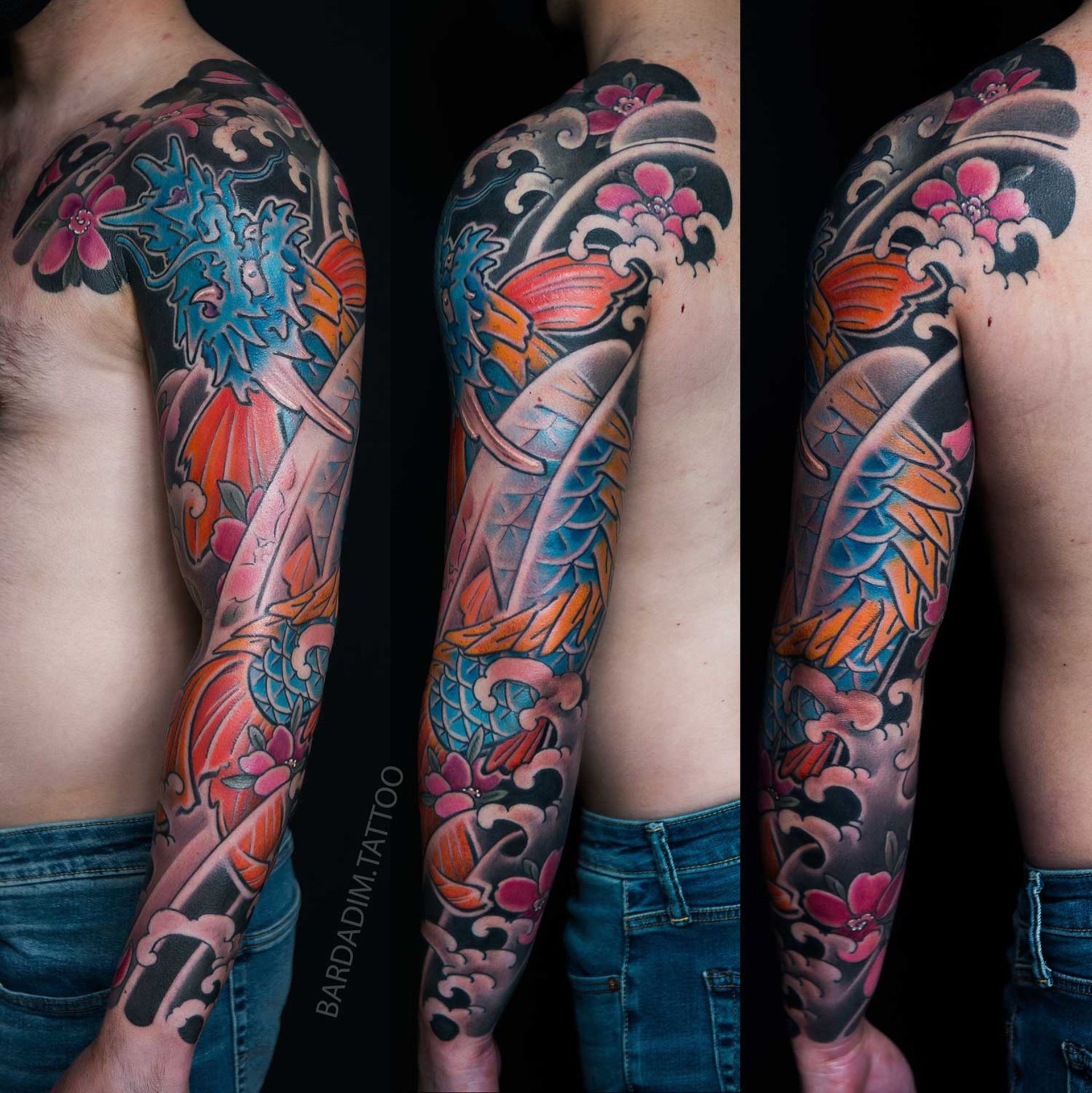
Other Posts


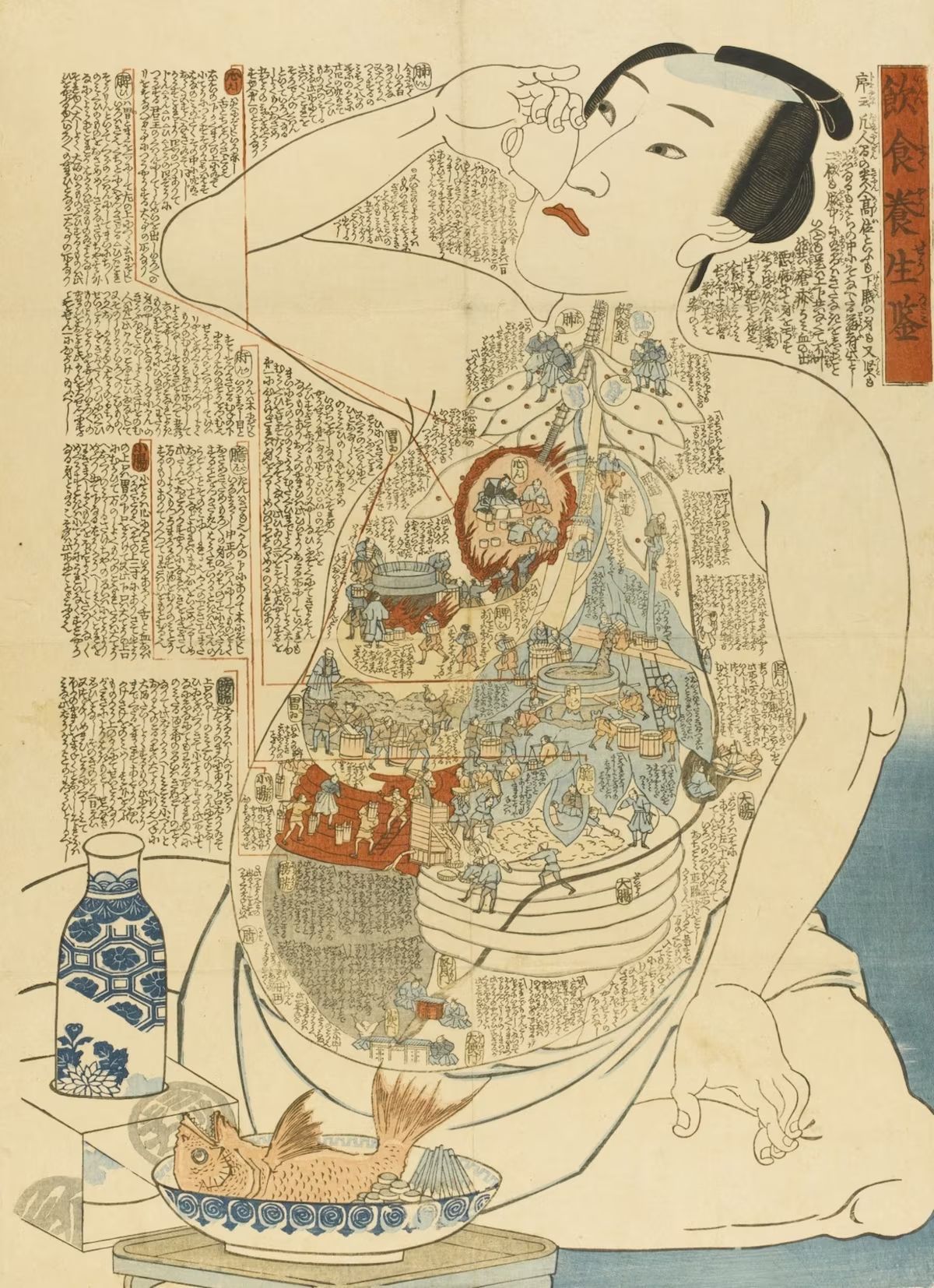
Ready to start your tattoo project?
We do NOT do walk-ins. ONLY private appointments which really easy to schedule. Please learn the process and request your consultation.



